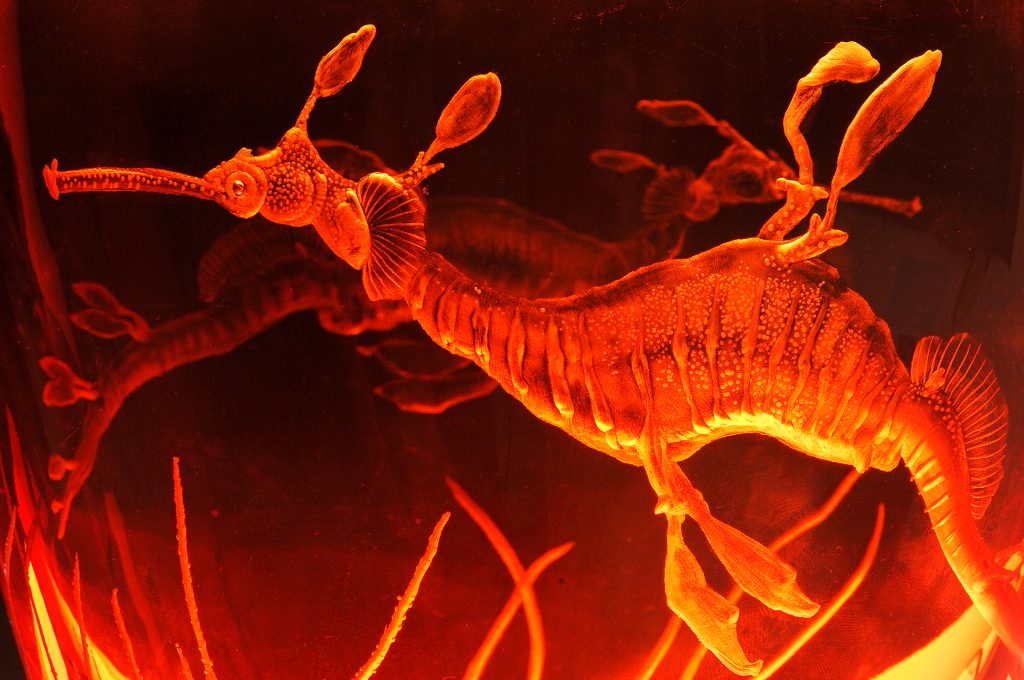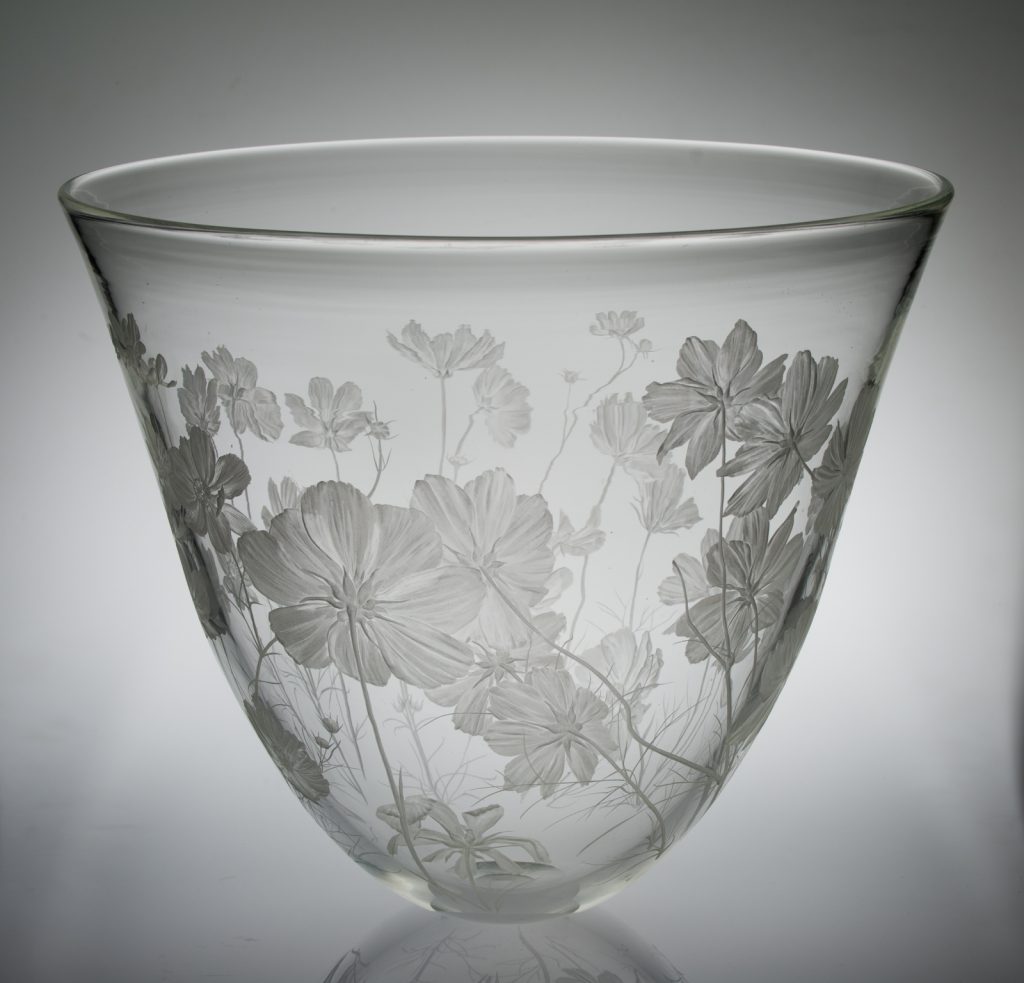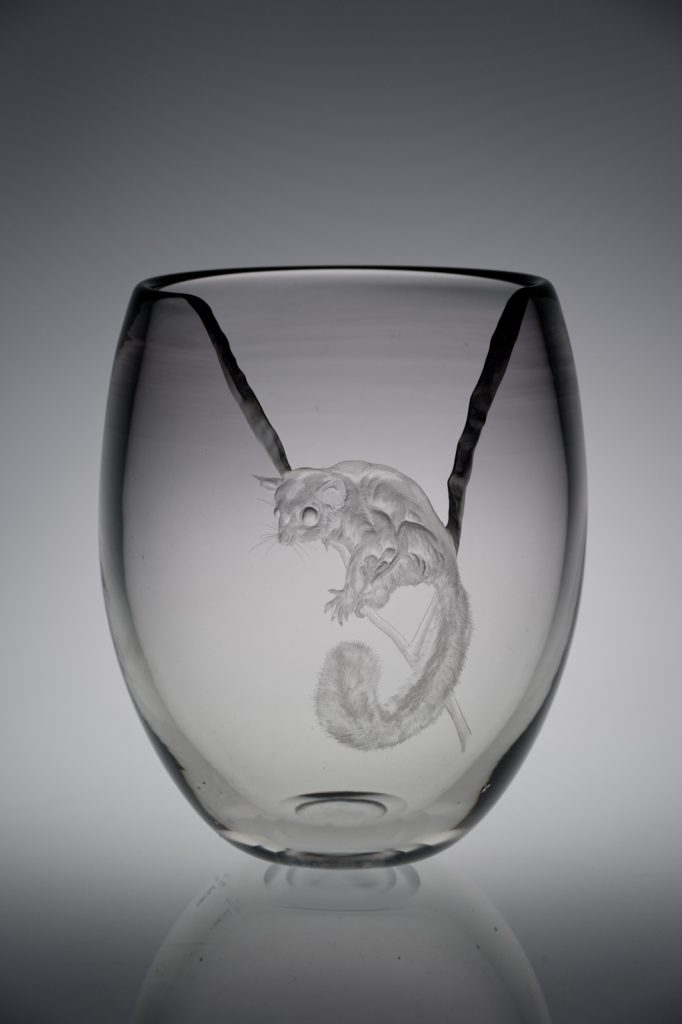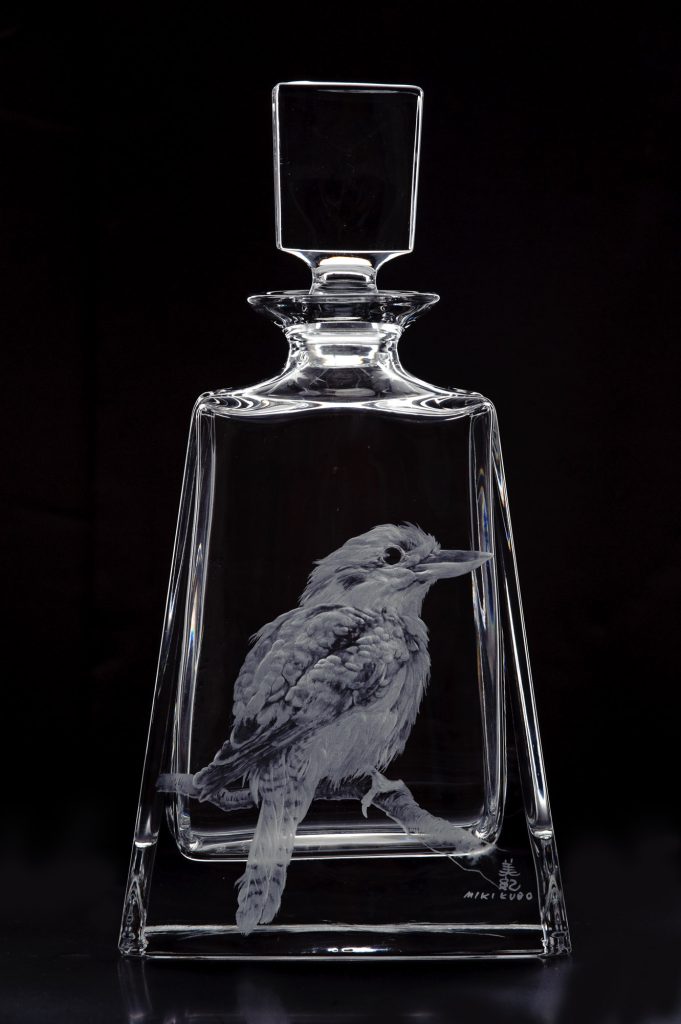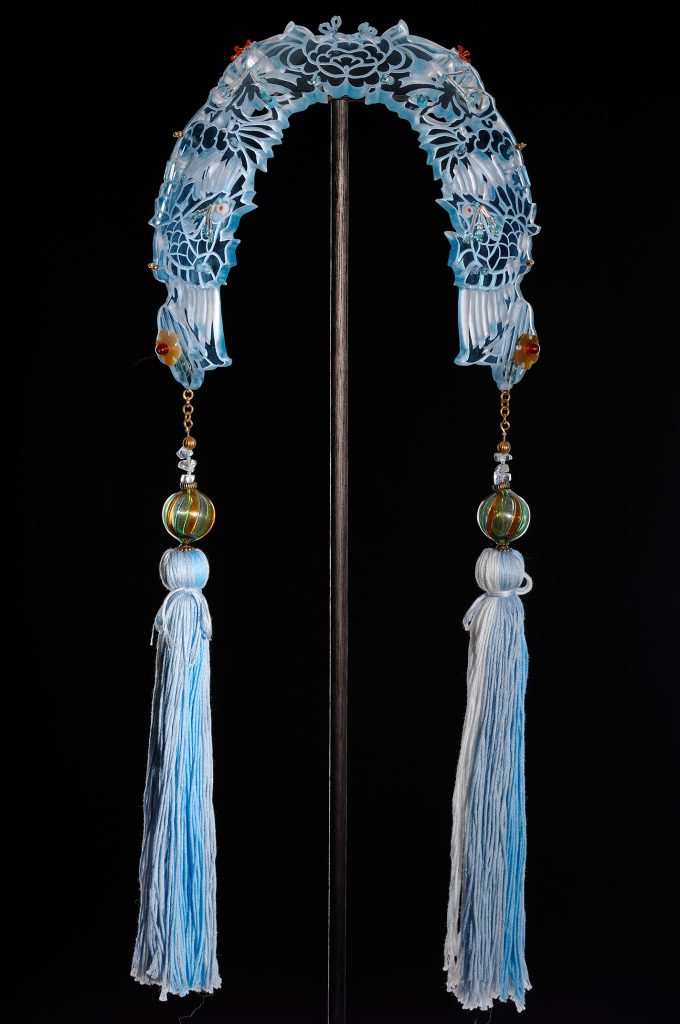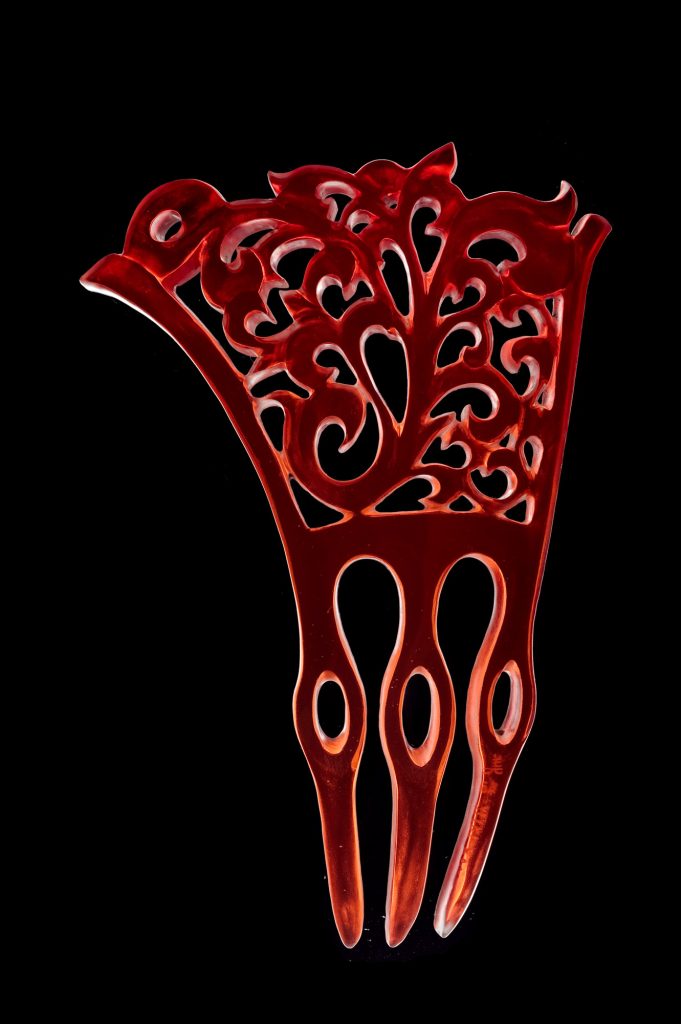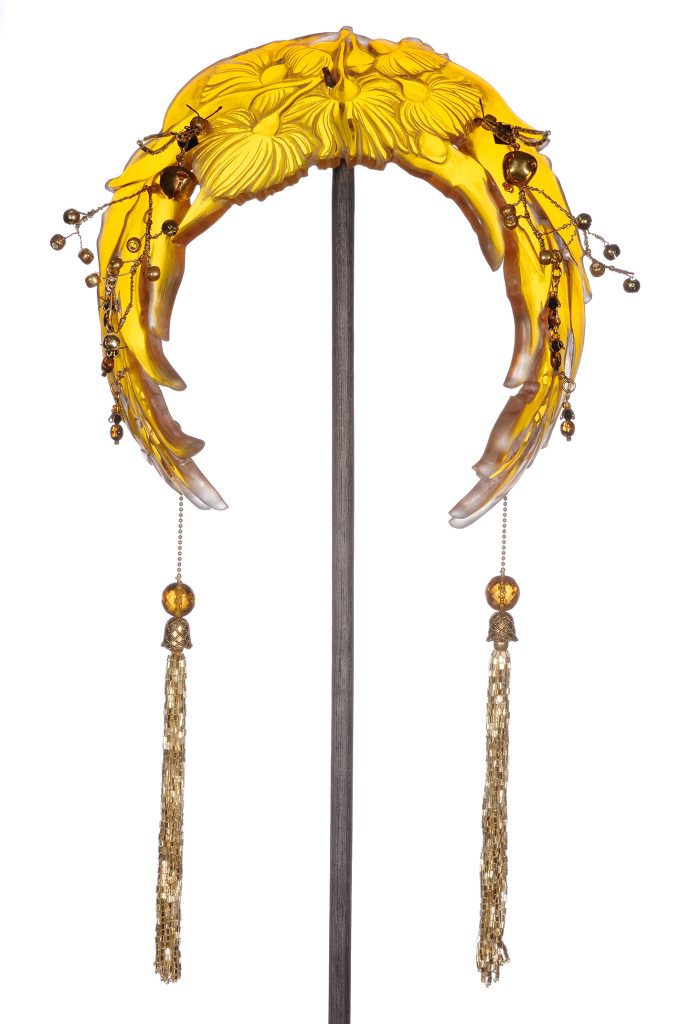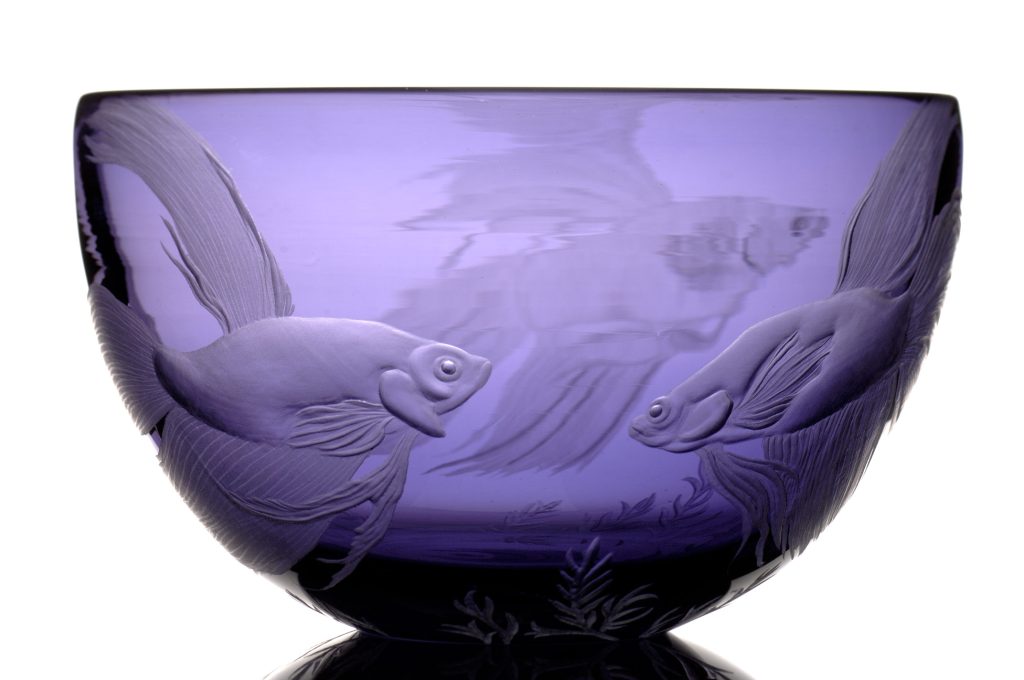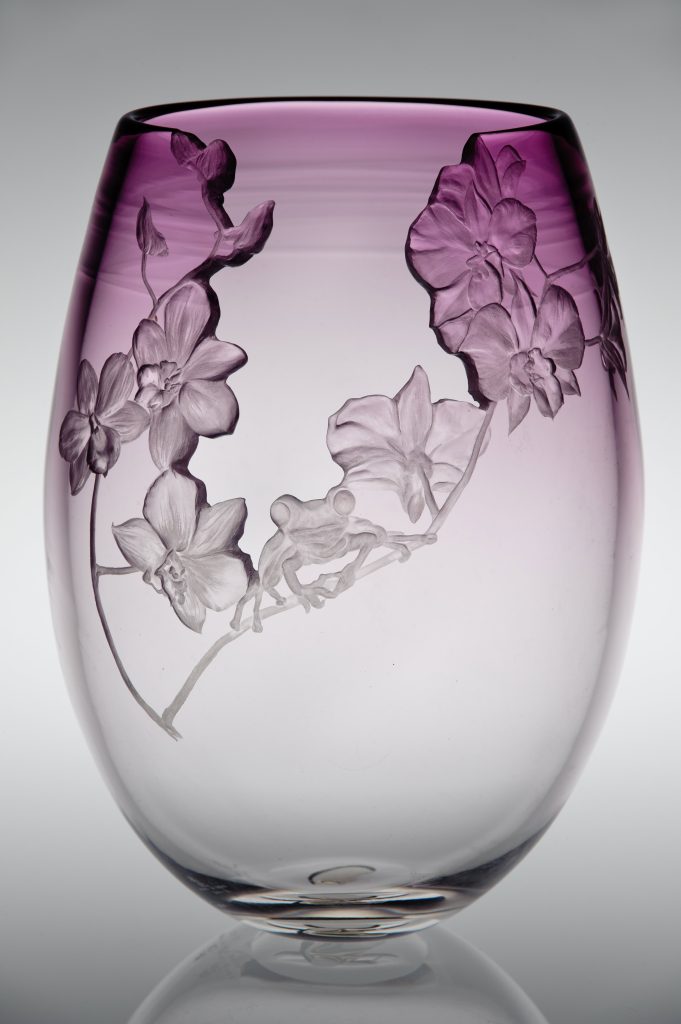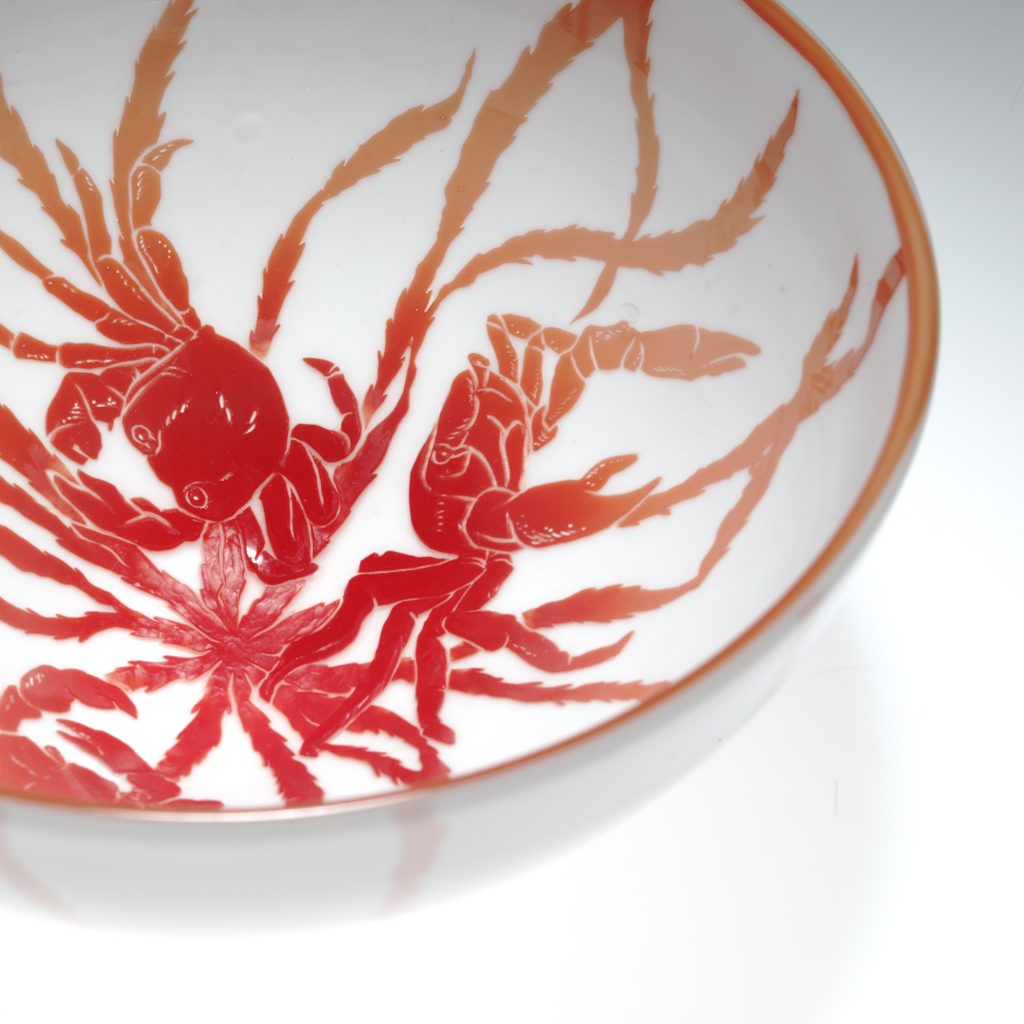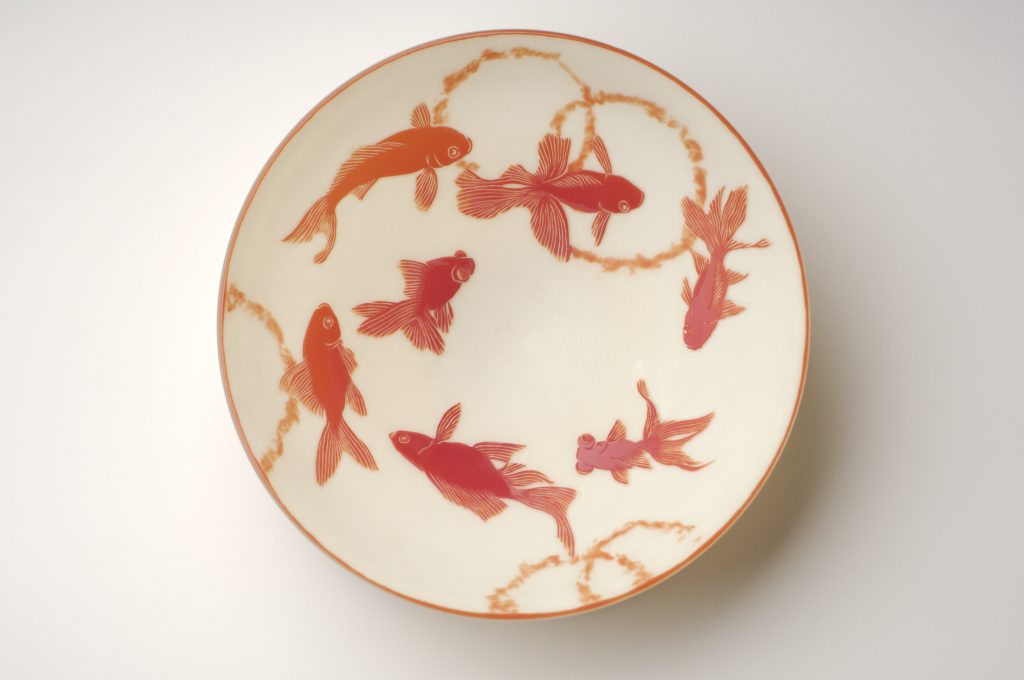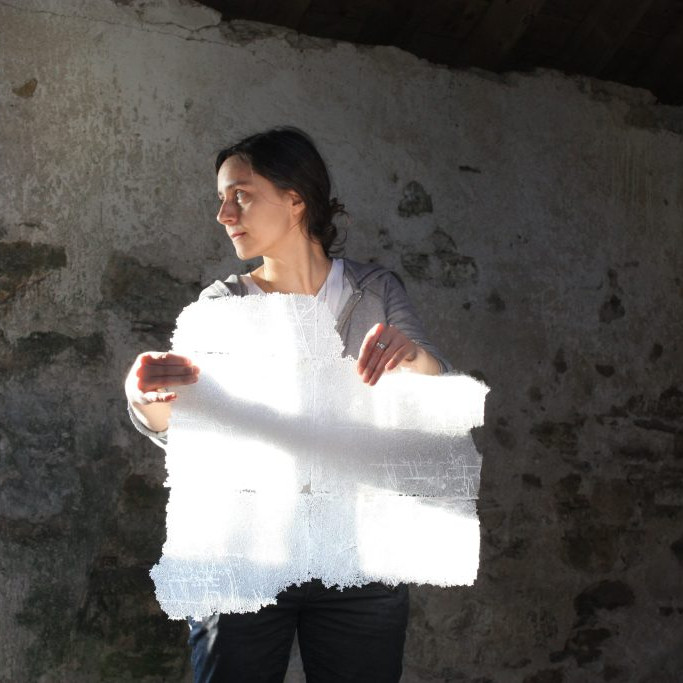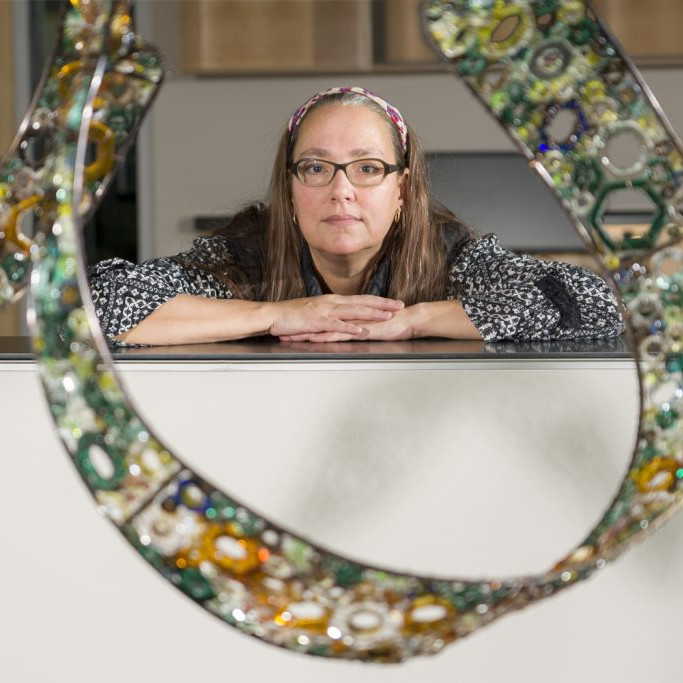Miki Kubo Glass Artist - Japanese Artist in Australia
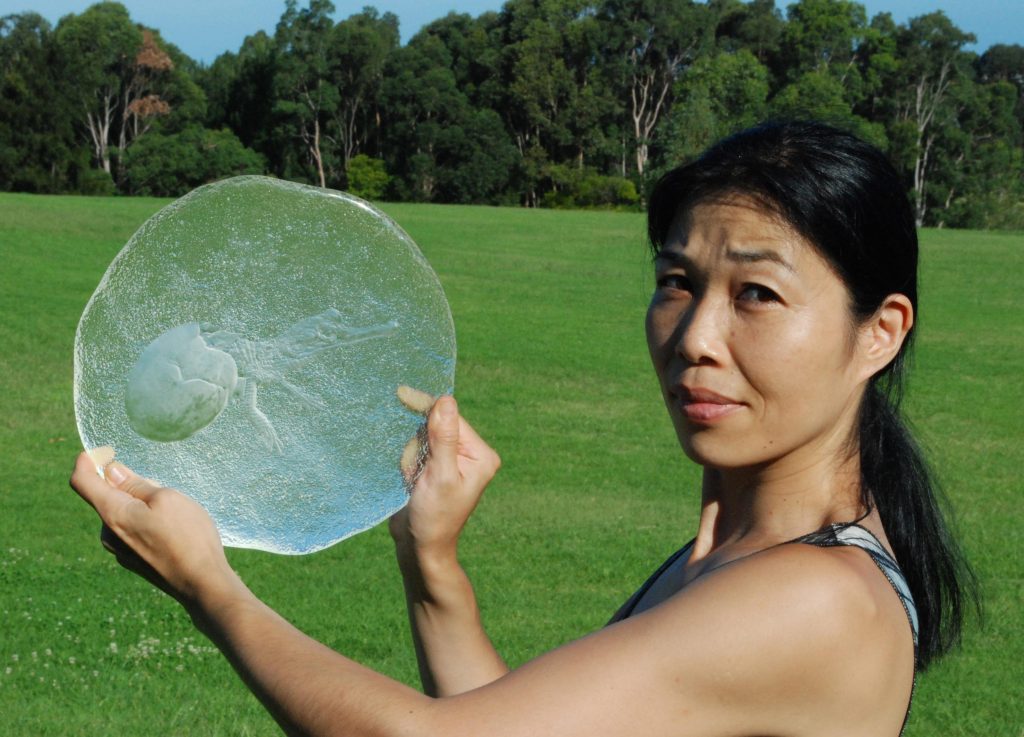 Miki Kubo, Japanese Artist in Australia photograph by Henry Rust
Miki Kubo, Japanese Artist in Australia photograph by Henry Rust
Zoneone Arts is delighted to bring Miki Kubo to you…
You take great inspiration form nature please discuss this?
When I look at Nature, at Life, I see a purity and connectedness that I long to be part of again. I feel that I am out of it, and I yearn to with my true self, my song. I want to feel the harmony with life that I see there. I want to cut through the noise to have a direct experience of the music of life.
‘Cosmos’ photograph by Henry Rust
Does your Japanese background give you a different connection with nature and animals to the one you have developed since arriving in Australia?
This is a question I am asked all the time as a Japanese artist living in Australia. I feel that my attitude as an artist and the fundamental approach to my subjects were formed and cultivated in my early teenage years in Japan. It might sound strange to Westerners, but we are encourage to be Westernized in so many ways especially after WWII. Many famous Western literatures are translated in Japanese and have been published repeatedly for children and adults, and J.D.Salinger was one of them. His book “Franny and Zooey” – it has guided me to be an artist who practice “see the subject for exactly what it is” and focus on “An artist’s only concern is to shoot for some kind of perfection, and on his own terms, not anyone else’s.” in my work. After school, I devoted all my time doing pencil drawings on white Canson paper…not much homework was done.
Animals you meet in Sydney tend to be more impudent and brave than the ones you come across in Japan. Australian sunlight is much brighter, which produces plenty of flowers in all seasons and trees seems to be much happier, but short lived. There are much more opportunities for me to study Animals in Australia and people’s passion for nature appears to be much stronger and direct. Being in the unfamiliar, forces me to focus in more strongly and recognise the subject.
Discuss your use of Australian flora and fauna in your work?
‘Sugar Glider’ photograph by Henry Rust
Australian flora and fauna designs were my engraving teacher Anne Dybka’s forte. When she closed her studio business due to her age and eye illness, she had introduced me to her distributers. During my engraving training with Anne, she made sure that I was able to engrave Australian flora and fauna in my interpretation so that I could carry out her legacy.
How important is the engraving (or carving) aspect of your glass art in your current work?
Engraving requires great focus and is extremely important in my artwork. Mistakes can’t be erased. The spinning bit demands deep concentration. Ear-muffs reduce outside distractions. Constantly running water means that I can’t see the surface where marks are being made.I trust in my connection with the subject and in the engraving process and focus goes deeper and deeper, allowing the work to come into existence.
Engraving on glass brings three dimensions, and the play of light and shadow, to the work. This is what makes it so appropriate as a medium for representing life. Each motif is its own self. I can’t own, or possess it, or take it away from what it is meant to be. All I can do is honour and wonder at its perfection. I do this through glass engraving.
‘Kookaburra’ photograph by Henry Rust
How you would like to see the pieces used?
My work is done in homage to the Life Force. In making a piece I touch the core of me – I reveal what I worship, who I am and what I aspire to be. I hope that through my work, others can find some of the peace, truth and joy that I find there.
Pieces that are culturally very different are your Hair Decoration Series can you expand on this series?
‘Small tiara with Phoenixes’ photograph by Henry Rust
This series is inspired by the “Chinese Kingfisher Hair Dress” from the Qing dynasty. I wanted to speak about the ’Power of Object’ through this series. I believe the original Kingfisher Hair Dress crowns were rented to decorate many young Chinese brides who were about to meet their unknown husbands under their arranged marriages. There was a time that tradition and family ties had so much power over people’s lives, so much in fact that there was no space for an individual’s feelings. Although we might have more freedoms now, compare to their past, we can still relate to those people who had to perform their act as what they were expected to. Otherwise we wouldn’t say “the show must go on” and drink from a cup that says, “Keep calm and carry on”.
‘Three teeth comb’ photograph by Henry Rust
On slightly larger piece in this series is ‘Bees and Flowers’ head dress discuss this piece?
‘Bees and Flowers, Head dress photography by Henry Rust
This particular headdress was dedicated to an Australian woman I saw in Queensland, we were at her late partner’s funeral ceremony. She was stood straight during the entire ceremony, wearing a golden eucalyptus flower branch on her hair.
Colour is so important to glass artist work tell us about your passion for colour?
I started my glass practice in a small glass-blowing company in Japan, in which we manufactured our own glass colours. Mixing glass colour from sand involves serious calculation based on chemistry and heat expansion technology. We had to sync the expansion rate and shrinkage in every colour so that the glass was compatible. It was time consuming, temperamental and an expensive process, and usually the recipes were kept in secret by the colour engineer in the same company. Therefore we had a very limited colour palette – red, orange and yellow were extremely rare to us. In Australia, usually the colours (for glass-blowing) come from New Zealand. Their colour ranges are – as many as nail polish, transparent and opaque in both! Now all the subtle colours in glass are accessible to me in Sydney.
‘Siamese Fighting Fish’ photograph by Henry Rust
However, as much as I love coloured glass, I enjoy working with non-colour and plain clear glass. It has its own attraction in that the engraved surface displays a much fine grade in shadow.
‘Frog and Orchards ‘photograph by Henry Rust
Shapes is predominate in your work, discuss shape in relationship to the piece, ‘Goldfish’?
The composition of glass is in its liquid form not solid – in the state of not hot enough to move, or it is moving but too slow to see. In this reason I like watery motives to go with glass and goldfish are on of them. Goldfish are man modified creature from many generations of mutated Crucian Carp which cannot exist in wild. It needs special, human controlled environment to survive. I’d like to keep them in safe bubble shape so that we can study their tranquility.
‘Goldfish’, aqua photograph by Henry Rust
Your piece ‘sea Dragons’ can you explain where you study the shapes and details of the animals you use?
I had a plastic Sea Dragon toy that I was hoping to use as a reference for a particular engraving, however it didn’t do justice to live Sea Dragons. I am very fortunate to be able to visit wild parks or aquariums as part of my job, to observe animals. At the Sydney Aquarium in particular – there were only ‘Weedy Sea Dragons’ exhibited at that time, but now you can meet ‘Weedy Sea Dragons’ and ‘Leafy Sea Dragons’ both at the Aquarium. When I engrave an animal, it is a portrait of that animal. It is not ‘a Sea Dragon’, it is that specific, personal Sea Dragon. Every individual animal is its own spirit. Each piece I make is an individual portrait of that animal, of that spirit.
‘Weedy Sea Dragons’ detail, photograph by Henry Rust
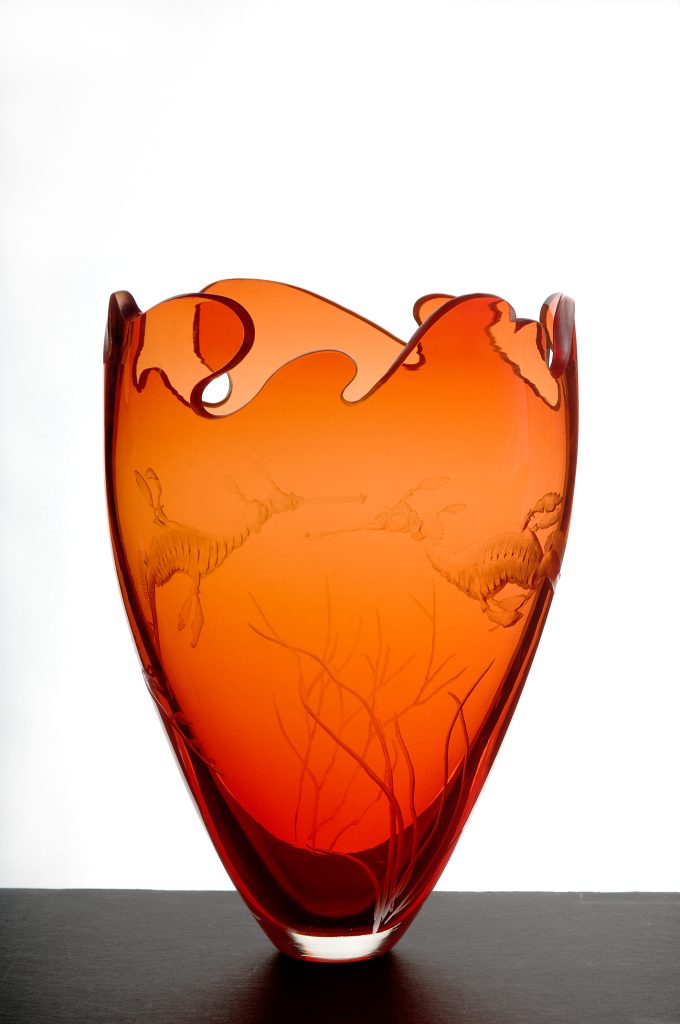
‘Weedy Sea Dragons’ detail, photograph by Henry Rust
Fragility is part of your work explain how important the openings are and how what is missing is such an important part of the whole?
Nature does not like to be disturbed. Pretty much everything we touch, we destroy.We break the perfect balance of nature and call them fragile.
In terms of my Glass bubble openings and why I like to design the edges into the motif’s – it is purely for the form of the Artwork – the carved glass edge adds light to the engraving and pushes the engraving out at the viewer. Also I get toapply two different kinds of engraving technique in one subject – intaglio engraving to carve in the motif and relief engraving to carve out. It is not about what is missing – it is more about emphasizing what is there.
Can you expand on the time you spent with Anne Dybka and how this time to influence your work today?
Between the year 2003 and 2005, every Saturday morning I was at Anne’s studio on Argyle Street in The Rocks. The lesson went usually two hours, it start off with me explaining to Anne what motif I will engrave and how I will approach it. The rest of the class we just talked about animals we both related to. There weren’t many things in common between us, but the strong feeling toward animals that really connected to us, was solid. She was an animal activist, born Greenie. Once she expressed me how she felt about Japanese whaling.
As her field of vision got smaller and darker, she shared many stories of her life to me.The job she had during the War in England, the big farm house she had lived, her passion about horses, her children’s toy stories, the egg fight her children and neighbour’s kids caused, her boarding school time in Switzerland, about the after-life,and about her mother. I was extremely fortunate to be able to spend time in her studio, she had shown me her affection to nature, her joyful and rich world through her work. When I engrave glass, I constantly imagine what Anne would do and what she would say.
Cameo work is very time consuming explain this method and how you use it?
Imagine an apple, a gorgeous red skin apple. When you peel the red skin, you find white fruit under it. To make a cameo piece, you will need a glass just like an apple. One colour on top of another, and sometimes triple layered glass. Usually, the skin- the first layer colour will be the motif you leave out. You carve the background area in order to make the motif lift up. This carving technique for cameo is called relief engraving. My Cameo bowls are interpretation of traditional hand-painted Porcelain in Asia.
‘Crab’ Cameo detail photograph by Greg Piper
You are a member of the Guild of Glass Engravers UK, what has been the value of a worldwide membership to you?
My initial reason for joining the GOGE was to follow the footstep of Anne – she was delighted when she heard the news I have been excepted to be a member. The GOGE offers vast information in engraving to all the public, promote artists and hold annual guild exhibitions. By being a member, it will gives you a great opportunity to connect with glass engravers worldwide. They hold assessment once a year by request and help you with developing your engrave practice. I found them very supportive, encouraging and full of warmth.
You have your work documented and photographed, discuss why and how this is done and why you would recommend this to other artists?
For many practical reasons, documentation of each piece is necessary for the artists who work with galleries under a consignment basis. Not just the detail of your work, the information such as, which gallery is selling it, for how much and how long. If I know who has bought it, I will record that too. Also when I take commission, having the list of previous pieces I worked on helps to come up with a fair quote for the future piece. Personally, engraving is a very intimate process. I spend at least few days extending my awareness towards the subject as best I can, so it feels like my mind is fused into the subject within the glass. Sending a finished work to the photographer is an important ritual, give a proper cleaning to the piece and pack in a box. It is the time that telling myself I am finished with this work, the piece is now ready for everyone’s interpretations and experiences.
Can you tell us about your work studio?
Being a Japanese Artist in Australia and travelling a lot has given me the privilege of working with many fine Sydney Glass Artists and sharing their work Studios. I have also worked in Sunshine Coast, Adelaide, Perth and Canberra Studios often as well. As I travel a lot, I usually take my portable Glass engraving table set up that I constructed, so I am able to do my engraving anywhere.
‘Goldfish’ cameo photograph by Henry Rust
What is your advice to Collectors of glass?
When I was in a glass company in Japan, our retail manager who sold our glass use to say “I don’t need to know the difficulty of glass technique, what I need, is the eyes that can tell what appeals to customers and the experience to know how much people will pay for it”. she was in charge of pricing all our work. I can only half agree to that! I do not wish my work to be defined and evaluated only by its technicality although I admit it is fascinating to know how the work was made. I imagine everyone has their own motivation and passion to collect objects. To collect something you will usually do some investigation in the field. What I do is a hand-made artwork, not machine made mass-production. Handmade art reflects the heart and soul of the artist. This is my best advice to a collector.
Contact details
www.mikikubo.com
Miki Kubo, Japanese Artist in Australia
Interview by Deborah Blakeley, March, 2015
Think a colleague or friend could benefit from this interview?
Knowledge is one of the biggest assets in any business. So why not forward this on to your friends and colleagues so they too can start taking advantage of the insightful information the artist has given?
Other artists you may be interested in:


